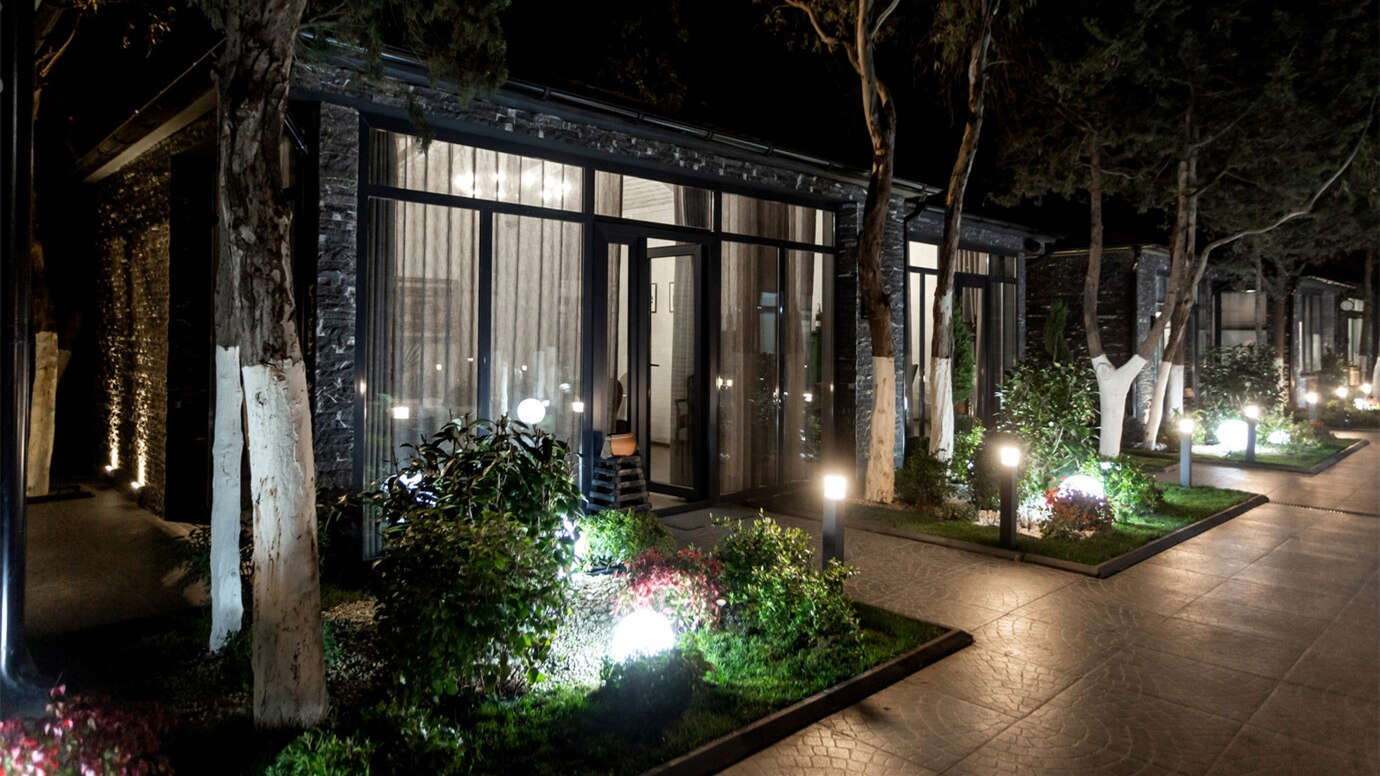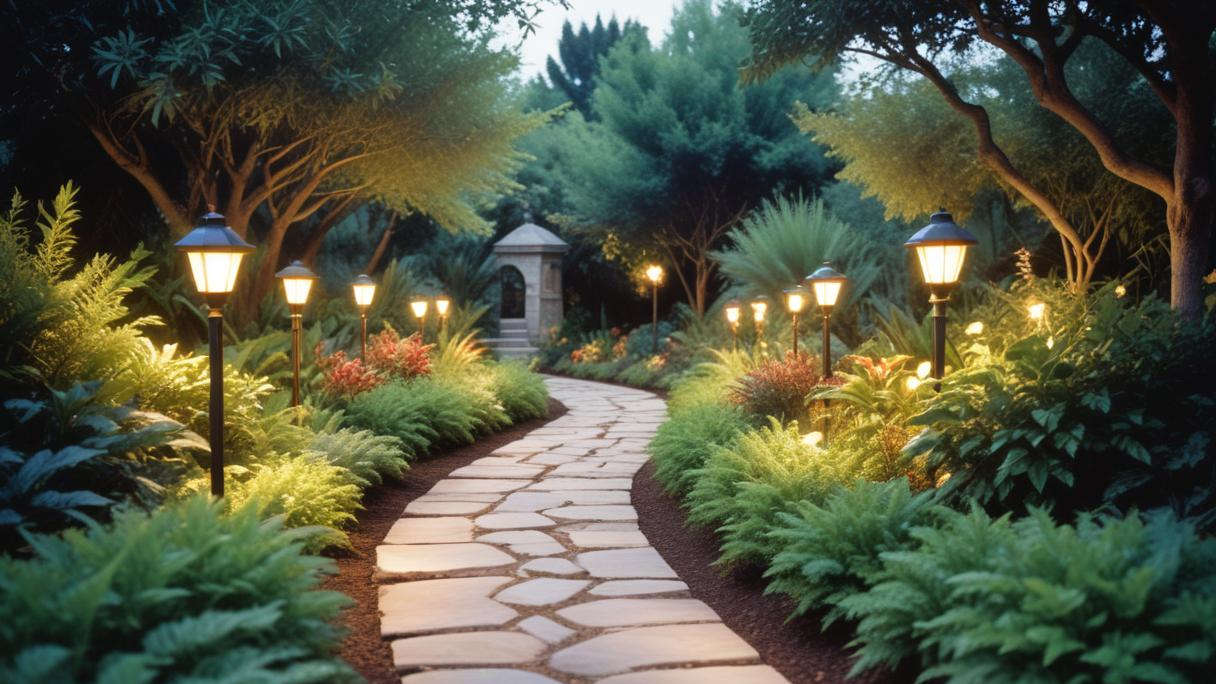Creating a beautifully illuminated garden is not only about choosing the right plants and landscaping, but also about selecting the right types of garden lights. Lighting can transform a garden from a daytime oasis to a nighttime retreat, adding ambiance, safety, and functionality. In this blog post, we will explore the different types of garden lights and their applications to help you make informed decisions for your outdoor space.
1. Path Lights
Description
Path lights are small fixtures placed along walkways, driveways, or garden paths. They are typically mounted on stakes and come in various designs, from simple and modern to ornate and traditional.
Applications
- Safety: Path lights ensure that walkways are well-lit, reducing the risk of trips and falls during the night.
- Aesthetic Appeal: They can highlight the edges of a pathway, creating a welcoming and enchanting ambiance.
- Guidance: Path lights help guide guests to specific areas, such as the entrance to your home or a garden feature.
Best Practices
- Space them evenly along the path for consistent lighting.
- Use energy-efficient LEDs to minimize power consumption.
- Choose fixtures that complement the overall style of your garden.
2. Spotlights
Description
Spotlights are powerful, focused lights that direct a beam of light to highlight specific features in the garden, such as trees, sculptures, or water features.
Applications
- Highlighting: Spotlights can be used to draw attention to focal points in the garden, such as a majestic tree or a beautifully sculpted statue.
- Creating Shadows: They can create dramatic shadow effects, adding depth and intrigue to the garden at night.
- Security: Bright spotlights can deter intruders by illuminating dark areas around your property.
Best Practices
- Position spotlights at the base of the feature you want to highlight, angled upwards.
- Use warm white lights to create a natural and inviting atmosphere.
- Consider using adjustable spotlights for flexibility in directing the light beam.
3. Floodlights
Description
Floodlights are high-intensity lights that cover a broad area with bright illumination. They are commonly used for security purposes but can also enhance the functionality of outdoor spaces.
Applications
- Security: Floodlights can light up large areas, making it difficult for intruders to hide.
- Functionality: They provide ample light for outdoor activities, such as playing sports, hosting parties, or working on projects.
- Highlighting Large Areas: Floodlights can be used to illuminate large garden sections, making them ideal for expansive lawns or gardens.
Best Practices
- Install motion sensors to activate the lights only when needed, conserving energy.
- Choose weather-resistant fixtures to withstand outdoor conditions.
- Position floodlights to avoid glare and ensure even coverage.

4. Deck and Step Lights
Description
Deck and step lights are small fixtures embedded in the surfaces of decks, stairs, and other outdoor structures. They provide subtle, low-level lighting that enhances safety and aesthetics.
Applications
- Safety: These lights illuminate stairs and edges, reducing the risk of accidents.
- Accent Lighting: They add a touch of elegance to outdoor structures, highlighting their architectural features.
- Guidance: Deck and step lights help guide movement around the garden, especially in low-light conditions.
Best Practices
- Install them flush with the surface to prevent tripping hazards.
- Use low-voltage LEDs to minimize energy consumption.
- Choose durable materials that can withstand foot traffic and weather conditions.
5. Bollard Lights
Description
Bollard lights are short, sturdy posts with lights on top, commonly used to illuminate pathways, driveways, and garden perimeters. They come in various styles, from modern to traditional.
Applications
- Pathway Lighting: Bollard lights are ideal for marking the edges of paths and driveways, ensuring safe navigation.
- Perimeter Lighting: They can define garden borders and create a clear boundary for your outdoor space.
- Decorative Lighting: With their stylish designs, bollard lights add aesthetic value to the garden both day and night.
Best Practices
- Space them evenly for uniform illumination.
- Choose bollard lights that match the overall design theme of your garden.
- Consider solar-powered options for easy installation and energy efficiency.
6. String Lights
Description
String lights are versatile and decorative, consisting of small bulbs on a flexible wire. They can be hung or draped across various garden structures.
Applications
- Ambiance: String lights create a cozy and festive atmosphere, perfect for outdoor dining or parties.
- Highlighting: They can be used to highlight garden features, such as pergolas, trees, or fences.
- Seasonal Decor: String lights are ideal for special occasions, holidays, or seasonal decorations.
Best Practices
- Choose weatherproof string lights designed for outdoor use.
- Secure them properly to prevent damage from wind or weather.
- Mix and match different styles and colors to create a unique look.
7. Lanterns
Description
Lanterns are portable lights that can be hung or placed on tables, walls, or garden floors. They come in various styles, including traditional, contemporary, and rustic.
Applications
- Ambient Lighting: Lanterns provide soft, diffused light that enhances the garden’s ambiance.
- Decoration: They serve as beautiful decorative elements, adding charm and character to the garden.
- Flexibility: Lanterns can be moved around easily, allowing you to change the lighting setup as needed.
Best Practices
- Use battery-operated or solar-powered lanterns for easy placement without wiring.
- Choose lanterns that match the garden’s style and theme.
- Arrange them in groups for a more dramatic effect.
8. Wall Lights
Description
Wall lights are fixtures mounted on walls, fences, or other vertical structures. They provide both functional and decorative lighting.
Applications
- Security: Wall lights can illuminate dark areas around the perimeter of your property, enhancing security.
- Accent Lighting: They highlight architectural features, such as walls, columns, or entrances.
- Task Lighting: Wall lights provide focused lighting for specific tasks, such as grilling or gardening at night.
Best Practices
- Position wall lights at a height that provides optimal illumination.
- Use lights with motion sensors or timers for convenience and energy savings.
- Select fixtures that complement the architectural style of your home and garden.
9. Underwater Lights
Description
Underwater lights are specially designed for use in water features, such as ponds, fountains, and swimming pools. They are waterproof and available in various colors and designs.
Applications
- Highlighting Water Features: Underwater lights enhance the beauty of ponds, fountains, and pools by illuminating them from within.
- Creating Effects: They can create stunning visual effects, such as shimmering water or glowing fish.
- Safety: Underwater lights ensure that water features are visible at night, preventing accidents.
Best Practices
- Choose lights that are rated for underwater use to ensure safety and durability.
- Position the lights to avoid direct glare and create a balanced, pleasing effect.
- Use color-changing lights for dynamic and captivating displays.
Conclusion
Choosing the right garden lights can transform your outdoor space into a magical and functional retreat. Whether you're aiming for a cozy ambiance, enhanced safety, or stunning visual effects, there's a garden light to suit your needs. By understanding the different types of garden lights and their applications, you can create a beautifully illuminated garden that can be enjoyed day and night. Consider your garden’s layout, your personal style, and the specific lighting needs of each area to make the most of your outdoor space.


































Leave a comment
This site is protected by hCaptcha and the hCaptcha Privacy Policy and Terms of Service apply.